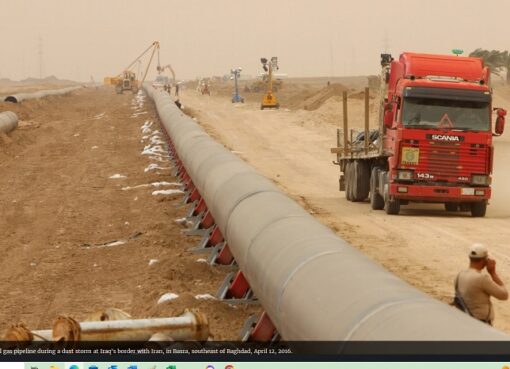Iraq hasn’t been the most research-friendly environment in recent years, but that could be changing. Credit: U.S. Army, Tech. Sgt. Rick Sforza
Ten years ago, the Iraqi scientific establishment was in trouble. Political and military convulsions following the American invasion made it difficult to maintain routinized studies critical for robust research. Iraqi scientists were unable to engage with their peers, and the annual national output of peer-reviewed publications dipped into the double digits. Mesopotamia, a region so integral to the rise of human culture, was essentially sidelined from modern science.
Today, there is a sense of renewed progress. Systematic structural challenges remain, to be sure (unplanned power outages can interrupt code or ruin biological samples, for example), but the momentum is tangible – publications have more than tripled in the intervening decade, with no sign of letting up.
Several stabilizing factors have converged to account for this progress, not least of which is the decline in violent conflict and the semblance of political continuity. But another key factor – one that is easy to overlook – is the availability of scientific literature to local practitioners. Thanks to the Iraq Virtual Science Library (IVSL), academic research – those peer-reviewed reports generally encaged by steep paywalls – is now widely accessible.
The growing movement toward open access in the United States and other developed countries is predicated largely on issues of fairness, taxpayer return, and the productive synergies of shared information. But initiatives like the IVSL reveal another role for open access – as a tool for economic and technical development.
Access to information isn’t a silver bullet, but it is a foundational pre-requisite for scientists to join the global community of researchers and tap into a common marketplace of ideas that can be tailored to fit local needs.
The IVSL was developed in 2006 through an intricate collaboration between the U.S. Department of Defense, Department of State, and the National Academies of Science; the science diplomacy organization CRDF Global managed the effort, handling logistical and technical hurdles.
CRDF Global got its start in the 1990s, working to transition scientists and engineers who developed the Soviet Union’s nuclear arsenal toward less threatening activities. With more than 100,000 weapons experts suddenly out of work after the collapse of the Soviet Union, the U.S. government – through organizations like CRDF Global – sought ways to redirect the human capital into entrepreneurial initiatives or collaborations with American scientists.
Since then, CRDF Global has expanded its remit, and today, the organization works with countries across a wide range of technical heritage and diplomatic accessibility. The IVSL represents a particularly promising project from this new phase of engagement: Iraqi scientists may not have been quite as technically imposing as those from the former Soviet Union, but their isolation from the global scientific community was similarly stunting. “In places that emerged from the Soviet system,” recalls CRDF Global President and CEO Cathy Campbell, “there was an attitude that, they had great scientific journals and if they just published there, that was enough. Working with those countries to expand their access to the global literature really opens their eyes and stresses the fact that it’s not enough to just publish in your national journal.”
Another carryover from the organization’s original mission is the aim of preventing brain drain. In the mid-‘90s, Campbell says, “we wanted to make sure that the talented scientists and engineers remained in their countries and weren’t temped to sell their knowledge and expertise to the highest bidder. Today, in places like Iraq, we know that science and engineering are very important for economic growth, and we want to create the conditions that keep that knowledge there.”
It’s difficult to quantitatively assess that non-action – the decision of a talented scientist to not leave – but Campbell believes other metrics point to a successful program. More than 80,000 students and faculty have access to top journals, and downloads have reached 65,000 articles per month.
Perhaps most importantly, the program was fully transferred to Iraqi management in 2010, paving the way for the country’s scientists to recapture their rightful role in global science.
*) Jeff Marlow is a graduate student in Geological and Planetary Sciences at the California Institute of Technology where he studies exotic microbial metabolisms in an attempt to understand the limits of life on Earth and beyond.
http://www.wired.com/wiredscience/2013/10/the-secret-behind-iraqs-scientific-resurgence/








Comment here